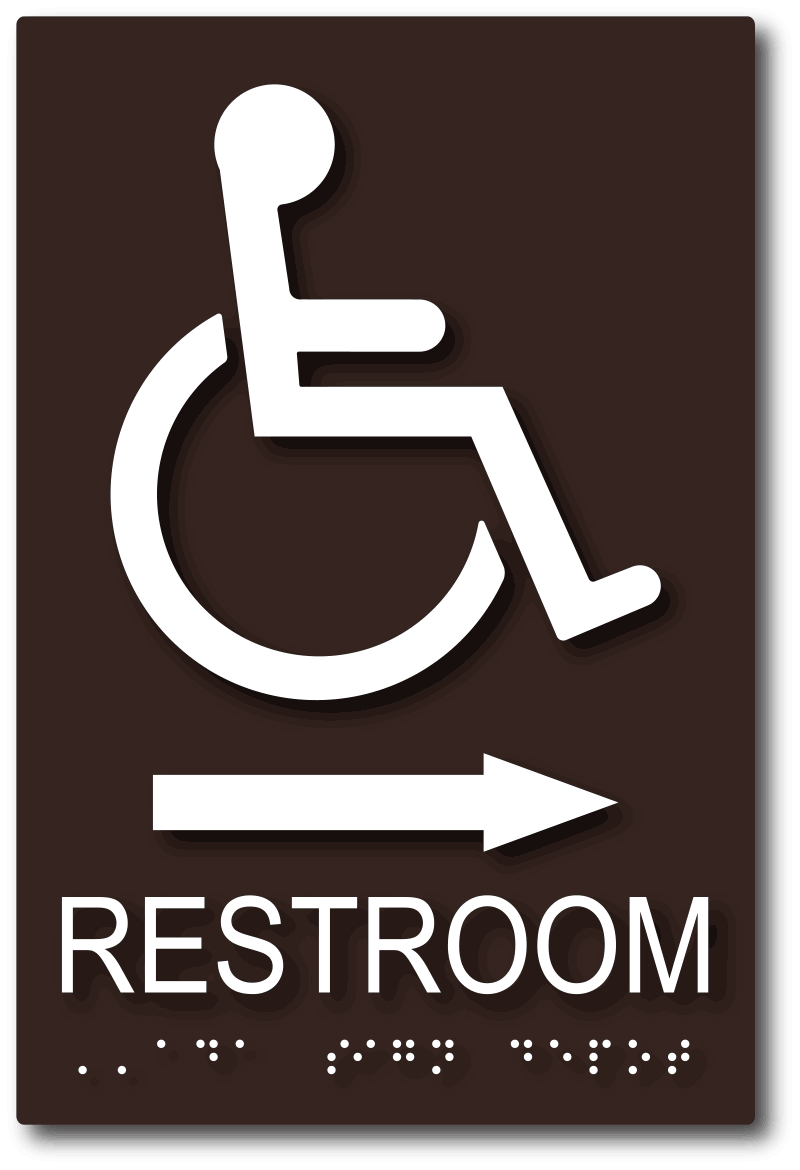Comprehending the Laws Behind ADA Signs
Comprehending the Laws Behind ADA Signs
Blog Article
Exploring the Secret Functions of ADA Indications for Boosted Ease Of Access
In the realm of access, ADA indications offer as quiet yet powerful allies, making certain that areas are comprehensive and accessible for people with specials needs. By integrating Braille and tactile aspects, these indicators break barriers for the aesthetically impaired, while high-contrast color schemes and readable typefaces provide to varied aesthetic requirements.
Relevance of ADA Conformity
Making certain compliance with the Americans with Disabilities Act (ADA) is critical for fostering inclusivity and equal gain access to in public areas and work environments. The ADA, passed in 1990, mandates that all public facilities, employers, and transport services fit people with impairments, ensuring they take pleasure in the very same legal rights and opportunities as others. Compliance with ADA standards not just meets lawful obligations yet additionally boosts a company's reputation by demonstrating its dedication to variety and inclusivity.
Among the vital facets of ADA conformity is the implementation of obtainable signage. ADA signs are developed to make sure that people with disabilities can easily browse with areas and structures. These signs need to follow certain standards regarding size, font, shade contrast, and placement to assure presence and readability for all. Properly applied ADA signs assists get rid of barriers that people with impairments commonly encounter, therefore promoting their self-reliance and confidence (ADA Signs).
Moreover, adhering to ADA regulations can minimize the threat of possible fines and lawful consequences. Organizations that stop working to conform with ADA standards may encounter lawsuits or charges, which can be both harmful and monetarily burdensome to their public image. Therefore, ADA compliance is indispensable to promoting a fair environment for everyone.
Braille and Tactile Aspects
The unification of Braille and responsive elements right into ADA signs personifies the principles of accessibility and inclusivity. It is generally positioned underneath the matching text on signage to make certain that people can access the details without aesthetic assistance.
Responsive aspects prolong beyond Braille and include elevated symbols and personalities. These elements are made to be noticeable by touch, enabling people to determine space numbers, bathrooms, leaves, and various other essential areas. The ADA establishes certain guidelines concerning the dimension, spacing, and placement of these tactile components to optimize readability and make certain consistency throughout different atmospheres.

High-Contrast Color Pattern
High-contrast color design play a crucial duty in boosting the presence and readability of ADA signs for people with visual impairments. These schemes are important as they make the most of the difference in light reflectance in between text and history, making certain that indications are conveniently discernible, even from a range. The Americans with Disabilities Act (ADA) mandates using certain color contrasts to fit those with minimal vision, making it a critical facet of compliance.
The effectiveness of high-contrast colors lies in their capability to stand out in different lights conditions, consisting of dimly lit settings and locations with glow. Check Out Your URL Normally, dark text on a light history or light text on a dark background is employed to achieve optimal contrast. Black message on a yellow or white background gives a raw aesthetic distinction that helps in fast acknowledgment and understanding.

Legible Fonts and Text Dimension
When taking into consideration the layout of ADA signage, the selection of clear font styles and proper message size can not be overemphasized. The useful link Americans with Disabilities Act (ADA) mandates that typefaces need to be not italic and sans-serif, oblique, manuscript, highly decorative, or of unusual type.
According to ADA guidelines, the minimal text elevation ought to be 5/8 inch, and it should raise proportionally with viewing distance. Consistency in message dimension adds to a cohesive aesthetic experience, assisting people in browsing settings effectively.
In addition, spacing in between letters and lines is integral to clarity. Adequate spacing avoids characters from showing up crowded, improving readability. By adhering to these criteria, developers can considerably improve availability, making sure that signs serves its designated objective for all people, no matter their aesthetic capacities.
Effective Positioning Methods
Strategic positioning of ADA signs is important for making the most of ease of access and ensuring conformity with lawful criteria. ADA guidelines state that indications need to be mounted at a height in between 48 to 60 inches from the ground to ensure they are within the line of view for both standing and seated individuals.
Additionally, indications need to be placed nearby to the lock side of doors to permit very easy identification before access. Consistency in indication placement throughout a center enhances predictability, reducing complication and improving overall user experience.

Verdict
ADA signs play an important role in advertising ease of access by incorporating attributes that resolve the demands of people with handicaps. Integrating Braille and responsive aspects makes sure important information is obtainable to the visually damaged, while high-contrast color design and clear sans-serif typefaces improve exposure across various lighting problems. Efficient positioning techniques, such as appropriate mounting heights and critical places, additionally assist in navigation. These elements jointly promote a comprehensive setting, highlighting the significance of ADA compliance in guaranteeing equal accessibility for all.
In the realm of ease of access, ADA signs offer as silent yet powerful allies, making sure that rooms are inclusive and accessible for people with impairments. The ADA, enacted in 1990, mandates that all public centers, employers, and transportation services suit individuals with specials needs, guaranteeing they appreciate the very same legal rights and possibilities as others. ADA Signs. ADA signs are made to make certain that people with specials needs can easily navigate with rooms and structures. ADA guidelines state that signs should be mounted at a height in between 48 to 60 inches from the ground to guarantee they are within the line of sight for both standing and seated people.ADA indications play an important function in promoting accessibility by incorporating features that resolve the demands of people with disabilities
Report this page